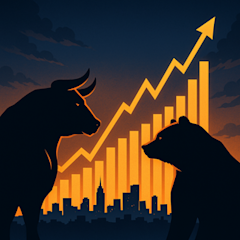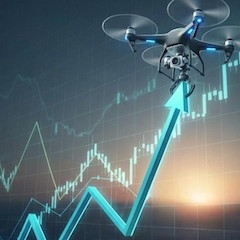
No Way To Run An Economy
Today’s GDP number came in weaker-than-expected at 1.6% annualized, the weakest quarterly gain in almost two years.
Wall Street did NOT like the news. At the open, the Dow fell by 681 points or 1.7%; the S&P 500 was down 1.5% and the Nasdaq Composite slid by 1.9%, as investors projected a longer wait for the first rate cut from the Federal Reserve.
We’ve written for months that there would be no interest rate cut by the Fed at their June meeting. Wall Street was putting the odds of a rate cut at around 70% and the stock market was rallying in anticipating the cut. They were wrong, we were right.
Today, every top Wall Street analyst is proclaiming there will be no rate cut in June, maybe not in July either. Thanks, guys and gals. You’re only about three months behind the curve, and your forecast came after the market had already corrected and internalized the new view. That’s worthless forecasting, but it’s what Wall Street does best.
Now there is a chance that we won’t get any rate cuts this year. There’s nothing new in this face plant. Wall Street has been wrong about rate cuts for almost two years, and they’re wrong now. Recall, the Federal Reserve started raising rates in March 2022 from a base of 0.00%. By the late summer of 2022, Wall Street was already talking about the “pivot.”
This was jargon for a rate cut. No one expected it that soon, but early 2023 was Wall Street’s target date for the pivot. That never happened. Wall Street extended the pivot date of mid-2023. Then late-2023. Then early-2024. Wrong, wrong, and wrong. Moving the pivot date from June 2024 to later this year is just the latest blunder.
Stagflation, Anyone?
The Fed wants to see inflation start coming down in a persistent manner, but the market wants to see economic growth and corporate profits increasing. So. if neither are headed in the right direction, then that’s going to be bad news for markets. With inflation actually rising in the latest report and economic growth slowing down with today’s GDP report, this is exactly what is happening.
Behind Powell’s carefully laid plans and the markets’ Goldilocks-type assumptions lies a huge fallacy. The assumption is that interest rates and inflation have a reciprocal relationship. Timing aside, markets and the Fed both assume that current high interest rates will tame inflation, and that will pave the way for rate cuts, stronger growth, and higher stock prices. But there’s no evidence for this.
The Great Depression (1929-1933) was a period of low interest rates and unprecedented deflation. The Great Inflation (1977-1981) was a period of high interest rates and record-high inflation. History teaches that there is no inverse correlation between interest rates and inflation.
In the 1930s, rates chased inflation down. In the 1970s, rates chased inflation up. In both episodes, the Fed did not lead the way, they followed. The Fed was not in charge. Markets and individual psychology were in charge. The Fed (and markets) are reactive and not proactive. This is no way to run a railroad.
We could be looking at the worst of all possible worlds. We are now seeing slowing growth and higher inflation at the same time. Stagflation, anyone?
The Fed Has No Idea What They Are Doing
The latest FOMC meeting back in March was followed by a press conference with Fed Chair Jay Powell. With regard to the policy rate, Powell repeated much of what he said last January and in his more recent testimony before Congress.
Powell said: “The economy has made considerable progress toward our dual mandate” to promote low unemployment and maintain price stability. But in almost the same breath he said, “Inflation is still too high.” He then added, “Inflation … remains above our longer-run goal of 2 percent.”
On the “positive” side, Powell said, “Economic activity has been expanding at a solid pace.” And he noted, “We did mark-up our growth forecast” in reference to the SEP dots. So, what happen to that “mark-up” for forecasting growth? That’s why the dots are worthless and Powell knows it.
So, we’re back to the conundrum that has faced the Fed since they stopped raising rates last July: The Fed is reluctant to cut rates because it might fuel inflation. At the same time, the Fed is reluctant to keep rates too high because it might cause recession (which may be already here)
Powell said this explicitly: “The risks are really two-sided here. … If we ease too early, we could see inflation come back. … If we ease too late, we could” impact the economy negatively.
I’ve been saying for months that a recession is imminent. Today’s GDP numbers reflect that the economic engine is slowing down.
It’s all nonsense; a narrative designed to lull investors into complacency and into buying more stocks. The truth is the Fed has no idea what they’re doing, the Fed doesn’t matter that much anyway, and Wall Street is in the tagalong business, not real forecasting.
Wall Street is following the Fed. And the Fed is using bad models that are consistently getting their forecasts wrong. It’s the blind leading the blind.
Want More Jim Rickards' Strategic Intelligence?
Do you like this content? Would you like to know more? Because we have this and much more to share with you. Get started today!









